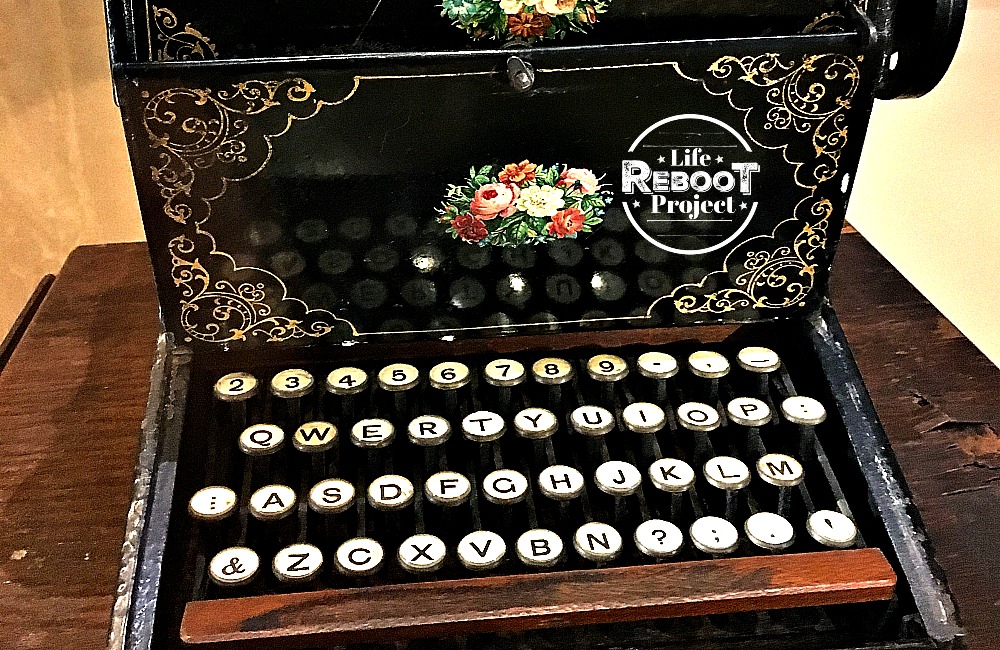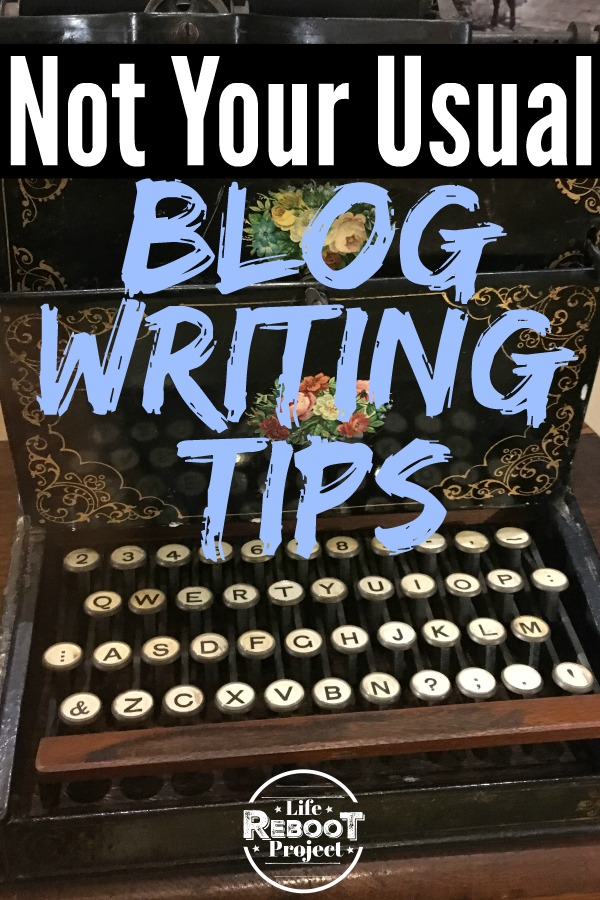
We’ve seen a lot of blog writing tips posts, and most unleash pretty much the same advice, write as you talk, avoid the wall of text, and break everything up with bullet points and subheadings.
But, when I started reading some of my posts to my writer’s group, I got a completely different reaction.
I took blog post-writing advice just like so many do. I broke up large blocks of text into smaller chunks. Many of these blocks were even smaller than standard paragraph structure. I started writing about how I spoke. Sometimes I also added in some oh’s and ah’s to put a personalized spin on the ‘how I spoke aspect’. I even started adding buzz words which I never really used but wanted to adhere to popular advice.
Then I joined a writers’ group and started reading some of my blog posts to see what they thought. There are several published authors in the group. I was shocked to hear some of the feedback.
They didn’t like the chunked-out paragraphs or the ‘writing how you speak’ advise dished out as common blog cliche writing. So, did I stop writing like that and do a complete about-face to take their advice as gospel?
No.
But, I did go into a long spiral of deliberation and thought into what is right and what is wrong with the writing.
So now I present to you my thoughts on the crossroads of what traditionally published word workers hold as golden advice and what the fast-paced world of a sixty-second attention span says are ‘must-dos’ when writing a regular blog post.
Don’t break up paragraphs into two-sentence chunks.
Breaking up the content into small chunks is one piece of advice I started experimenting with extensively. There are two ways of thinking of this, and it comes down to what type of people you are talking to and the kind of content you are writing. It all comes down to the readers and how they want to read it.
The reader.
The first type of reader is someone who reads a lot. I call them ‘old-school fictionists.’ If you think you fall into this category, don’t be offended. I love writing to this group. These people enjoy language and how it’s used as much as they love the information conveyed in the post. These people are particular about punctuation and push their writers hard to thrill and entertain them with every turn.
These people like a more traditional structured piece and full paragraph structure. They believe chunked-out paragraphs break the smooth flow of a piece and hurt readership almost like stuttering hurts listening.
The scanner.
The other type of reader is the always-on-the-go ‘scanner.’ These readers are looking for the information chunked out so they can consume it quickly and move on. These readers love the two-sentence paragraphs, bullet points, and the subheading structure.
So, what do you do?
I started changing up my writing depending on the type of reader I was expecting my article to attract. If I’m writing something for the old school ‘fictionists’, I use longer paragraphs and a more traditional structure. I might throw in some very short single-sentence paragraphs where I want to emphasize a point, but for the most part, I use longer solid paragraphs.
These posts are deeper thought-type posts or posts designed to be read as wind-down or more entertainment-based. When I’m writing a post where I want to get the information passed quickly to someone who I believe to be ‘on the go’ or has a very limited amount of time, I tend to bullet point it up and shorten the paragraphs to make it easy for them to read.
The whole point of mixing it up is to increase readership. Instead of using a specific set of rules to govern all the content, I’m trying to match the standards to what the reader is expecting. And, you know, I’m always experimenting with this. The experimenting in anticipating the type of reader becomes as much a part of the game as the writing.
Write as you speak.
You are reading what I write. You knew from the beginning of this article that I try to write as I talk. I read a lot of memoir pieces written in the first person. I love them. I love listening to people tell stories. Writing as you talk is like sitting down with someone who is just telling you a story.
The complicated part of this writing is taking out the stumbling blocks we often use when we speak. Our brain processes information differently when we hear it as opposed to when we read it. Proof of this can be seen in people who have reading disabilities like dyslexia. People who have varying degrees of dyslexia will sometimes process the information you write differently than if you just sit down and use the same words when you talk to them.
So, to write as you speak isn’t always the best advice.
One piece of advice I like is to read it out loud. When you read something out loud, you are converting the written language into the spoken word. There is a sort of magic explosion happening here.
Think about this for a minute. Someone with dyslexia has a reading disability but can absorb verbal ideas easily. When reading it out loud and making everything flow as smoothly as possible, you are taking out all those stumbling blocks. This gets me to my next point.
There is also rhythm in writing. When you are reading something out loud, you are verbalizing these rhythms. Keeping a piece of writing in rhythm, helps readers flow when reading. Readers can anticipate words and absorb meanings better the more a piece follows with specific smooth rhythmic patterns.
I try to read all my writing out loud at least once during edits. I must admit, though, when the pressure is on this rule sometimes gets broken. Reading something out loud is the most useful advice I’ve heard so far.
Use unusual comparisons to bring out flavors of writing.
I like unusual comparisons and practice them with my friends as often as I can in everyday conversation, these are friends I met going out or even online in sites like https://chatempanada.com. I like to see how they work. I love comparisons that exaggerate the condition to emphasize the point. Something like comparing the roughness of a city street to running a dune buggy through a plowed field at 100 mph.
The problem with using comparisons is you need to compare two things where the general reader understands both things equally. The above analogy will not work with too many people because you will need to understand a plowed field will have furrows two feet deep and dune buggies have no problem leaving the ground when they hit holes that size.
A better comparison may be road roughness like traversing the speed bumps in a Walmart parking lot with a 74’ station wagon at 70 mph.
Think of comparisons that may make your reader turn their head and say, “What?” Maybe, you might get a little chuckle out of the comparison. The very least you should go for is something that makes the post a little more interesting.
Go for that juxtaposition comparison.
Eliminate all your adverbs. Really?
Stephen King is insistent on eliminating all adverbs in his writing. I don’t think eliminating each one is useful in every circumstance. Every once in a while I like using them to emphasize a simple verb without making it seem like I’m stretching. Using an overreaching super stupendous verb might not work. I love using adverbs when I’m looking for the simplicity of a simple verb with just a little pizazz added to the top.
It all leads back to the writing how you speak thing. We talk with adverbs, so I use them when I write. I will say, without a doubt, dropping them does make writing much cleaner. I find myself using them naturally in conversation. It’s hard for me to stop. I have to go back and work hard to eliminate them all.
If you are new to the writing game and you are reading this, you might be saying, “How do I spot an adverb?” The best way to spot an adverb is if it ends in ‘ly,’ and they modify the verb. Look for the verb in your sentence and look for words around it to see if anything is pointing at that verb to give it more attention. Like the sentence,” Joe walked swiftly.” It’s a simple sentence, but the adverb is ‘swiftly.’ It’s modifying the verb walked. You can pull swiftly out of the sentence, and the sentence’s meaning doesn’t change. It’s still fun to play with them occasionally.
Eliminate passive voice, maybe sometimes.
Eliminating passive voice is difficult for me. I speak a lot using the passive voice, so when I start writing, it just seems to appear in sentences. I have to make a conscious effort to go back and eliminate most if not all passive voices. I do recognize it does make writing cleaner and more exact.
I do find instances where I like to leave it in for specific effects. I use a program called Grammarly to check my spelling and grammar. They have a free version and a paid version. The paid version has more features and will go through and check for more problems. The free version does spelling and basic sentence structure.
The easiest way to spot passive voice is to find the subject of the sentence and see if that subject is doing the action or the verb is acting on the subject.
A simple sentence like, “The ball was passed.” is passive voice. ‘The ball’ is the predicate of the sentence. We need to guess who passed the ball. If we put an additional noun at the back of the sentence, the sentence still makes sense. “The ball was passed by Jon.” Jon is the subject of the sentence. He did the action. An active voice version can’t lose any part of the sentence without destroying the meaning. “Jon passed the ball.”
I still struggle with identifying all my passive voices. I love Grammarly. It works well in pointing out all the passive voices in what I write. I go through and either correct all the instances or leave them alone if I choose.
Writing without a passive voice makes writing much cleaner and the rhythm of the sentences will flow better using the active voice. Active voice gives writing a snap passive voice can’t.
Here is the thing about writing. You never master it. It is ever-changing and ever-evolving. I have never heard any writer, no matter how good or well-renowned, say they are done learning.
People are continually experimenting and pushing around different styles to see if they resonate with different audiences. Good writers keep working to expand their craft.
The best advice is to keep reading, writing, and experimenting. Try out some of the advice above to see if it resonates with you. If it doesn’t, throw it away and try something else. You just may come up with your form which takes the writing world by storm and creates a new set of rules around how you write. You never know.
Be safe,
Kevin

